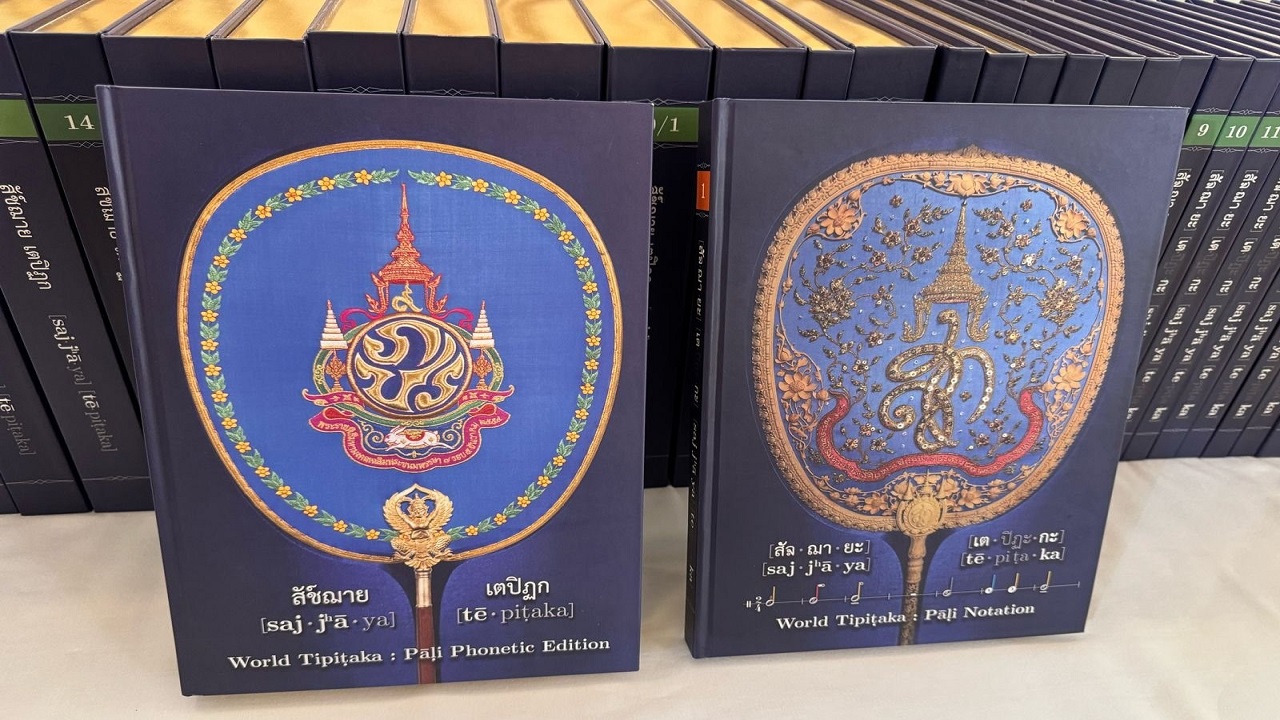Tipitaka as Soft Power: India’s Spiritual Diplomacy in Southeast Asia
Context: India
-
During a recent diplomatic exchange, Prime Minister Narendra Modi was presented with the 'World Tipitaka: Sajjhaya Phonetic Edition' by his Thai counterpart, Paetongtarn Shinawatra.
-
This symbolic gesture is a reflection of the shared civilizational and spiritual ties between India and Thailand, particularly rooted in Buddhism.
-
The gift emphasizes the importance of cultural and soft power diplomacy in foreign relations.
-
It also serves to highlight India’s role as the cradle of Buddhism and its continued influence across South and Southeast Asia.
What is the Tipitaka (Tripitaka)?
-
The Tipitaka, also known as Tripitaka in Sanskrit, is the earliest and most authoritative collection of Buddhist scriptures.
-
The term means “Three Baskets”, referring to the three divisions of the Buddhist canon:
-
Vinaya Pitaka (rules for monastic discipline)
-
Sutta Pitaka (discourses of the Buddha)
-
Abhidhamma Pitaka (philosophical and psychological analysis)
-
-
Also known as the Pali Canon in the Theravāda Buddhist tradition.
-
Initially preserved orally, the Tipitaka was first written down in the 1st century BCE in Pali language in Sri Lanka.
Three Baskets of the Tipitaka
1. Vinaya Pitaka (Basket of Discipline)
-
Contains over 220 rules governing the conduct of monks (bhikkhus) and nuns (bhikkhunis).
-
Includes origin stories explaining the context of each rule.
-
Significance:
-
Ensures ethical discipline within the monastic order (Sangha).
-
Promotes community harmony and moral integrity.
-
2. Sutta Pitaka (Basket of Discourses)
-
Contains the teachings and sermons of Gautama Buddha.
-
Divided into five Nikayas:
-
Digha Nikaya – Long Discourses
-
Majjhima Nikaya – Middle-Length Discourses
-
Samyutta Nikaya – Thematic Discourses
-
Anguttara Nikaya – Numerical Discourses
-
Khuddaka Nikaya – Minor Collection (includes Dhammapada, Jataka Tales, etc.)
-
-
Significance:
-
Serves as the foundation of Buddhist philosophy, ethics, and practice.
-
Widely studied by both monastics and lay practitioners.
-
3. Abhidhamma Pitaka (Basket of Higher Doctrine)
-
Focuses on systematic classification of:
-
Mind (citta)
-
Matter (rupa)
-
Mental formations and states
-
-
Highly abstract and analytical, used by scholars for metaphysical inquiry.
-
Significance:
-
Basis for Buddhist psychology, epistemology, and meditative development.
-
Played a key role in later doctrinal schools of Buddhism.
-
Historical Background of the Tipitaka
-
Orally transmitted after Buddha’s Mahaparinirvana (~483 BCE).
-
First Buddhist Council (Rajgir): Recollection of teachings by disciples.
-
Fourth Buddhist Council (Sri Lanka, 1st century BCE): Tipitaka inscribed on palm leaves, preserving it in Pali language.
-
The Theravāda school maintains the only complete Tipitaka in Pali.
-
Versions in Sanskrit (Sarvāstivāda), Chinese, and Tibetan exist in other Buddhist traditions.
About the World Tipitaka: Sajjhaya Phonetic Edition
-
A modern recitation-based edition of the Tipitaka aimed at preserving accurate phonetics and oral tradition.
-
'Sajjhaya' means recital or chanting, a key method of traditional Buddhist learning.
-
Highlights the importance of oral transmission in Theravāda Buddhist practice.
-
The edition strengthens transnational Buddhist connections, especially among India, Thailand, Sri Lanka, Myanmar, and Laos.
Significance of the Event for India
-
Showcases India’s civilizational legacy as the birthplace of Buddhism.
-
Enhances India’s soft power diplomacy, especially in Southeast Asia.
-
Reinforces India’s role in:
-
Preservation and promotion of Buddhist heritage
-
Spiritual diplomacy through shared values and history
-
-
Strengthens India–Thailand relations through cultural and religious dialogue.

.jpg)


Comments (0)